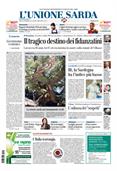Sardinia, NEET alert: one in five is out of school and work.
They are young people who do not study, do not work and do not follow any training pathPer restare aggiornato entra nel nostro canale Whatsapp
In Sardinia, the higher the mother's educational qualification, the lower the likelihood that her children will become NEETs, those young people who neither study, work nor follow any training path.
A clear, almost mathematical correlation, which reveals more than any statistic the decisive role of female education in social mobility.
According to the report “NEET, non-invisible young people: challenges and answers to activate the resources of the future” – promoted by the Gi Group Foundation together with the Youth Observatory of the Toniolo Institute, ZeroNeet of the Cariplo Foundation and the Compagnia di San Paolo Foundation – Sardinia records worrying data: more than one in five young people (20.2%) between the ages of 15 and 34 are neither working nor studying and are not enrolled in any training programme.
But behind the regional average lies an even more stark reality: in families where the mother has only a primary school education, the NEET rate rises to 32.3%; it drops to 24% if the mother has only a middle school education, and plummets to 13.4% among children of mothers with high school diplomas.
"The mother's education has a protective function," explains Chiara Violini, president of the Gi Group Foundation, "because it reduces the burden of social norms that still place the primary burden of domestic care on women, and promotes more stable career paths. Growing up with a mother with a high school diploma means having not only greater economic resources, but also skills and career guidance networks that facilitate entry into the workforce."
The study broadens its scope to 34-year-olds, capturing a generation struggling to achieve stability and independence. Among young Sardinians, the percentage of NEETs increases with age: 6.7% among 15-19 year-olds, 17.1% among 20-24 year-olds, 29.1% among 25-29 year-olds, and 26.6% among 30-34 year-olds.
Women are the most affected: 21.6% compared to 19% of their male peers.
